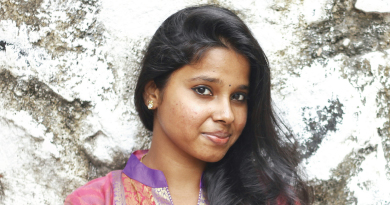Give wings to your creativity – Build a career in Animation
 Imagination is limitless and a fragment of this imagination led to incubation of the fascinating world of animation. Remember the legendary cartoons we grew up with? Tom and Jerry used to be our best stress buster, Mickey Mouse and Mini’s was the first love story we saw, and 5 pm was our daily appointment with the Pokemons! All these were brilliant examples of animation and with a multifold increase in animation movies, ads, and posters, this field has now become a rage among people.
Imagination is limitless and a fragment of this imagination led to incubation of the fascinating world of animation. Remember the legendary cartoons we grew up with? Tom and Jerry used to be our best stress buster, Mickey Mouse and Mini’s was the first love story we saw, and 5 pm was our daily appointment with the Pokemons! All these were brilliant examples of animation and with a multifold increase in animation movies, ads, and posters, this field has now become a rage among people.
So what exactly is animation? An animation is basically putting images in such a sequence that it creates an illusion of movement. This is done by creating the position of one object in relation to another. The device used to show these images then projects them rapidly, faster than a usual film, for example, 25-30 frames per second. Sounds exciting? Well, let’s dig deep and take a quick tour in this world of fantasy.
Types of animation –
I. 2D Animation:
It mostly refers to any keyframed animation that is produced on a flat surface but can also include vector animations that adopt the techniques of traditional animation. A keyframe in the animation is a drawing that defines the starting and ending points of any smooth transition. Beauty and the Beast and Aladdin were some of the most famous works of this form. 2D animation can be of two types –
a. Traditional (Cel) Animation –
In traditional animation, pictures with slight changes in the position of different objects or characters are drawn one after the other. These are then traced on a transparent sheet, known as cel. The back of the cel is then used to fill the pictures with colour. Once this is over, a camera is used to photograph the drawings and finally before projecting them, appropriate music, voice overs, etc. are added. Most old cartoons including Tom and Jerry were created this way. The Lion King is one of the most famous traditionally animated feature films.
 Pic courtesy: http://webneel.com/walk-cycle-animation
Pic courtesy: http://webneel.com/walk-cycle-animation
b. Computer Animation –
Computer animation is any animation that is created digitally using a computer. It is more controllable and faster than traditional animation and includes a wide range of techniques. There are hundreds of software available for computational animation.
Required tools:
For 2D animation, following are the most recommended tools –
a. If you are looking to start with the basics, try the free softwares Pivot Animator and Pencil 2D.
b. Adobe Flash – Adobe’s animation tool known as Flash is one of the best 2D animation software. It is easy to use and very flexible.
c. Adobe After Effect – It is used to add visual effect and typography to a video narrative. It is essentially photoshopped for movies and is widely used in the industry these days.
Hot profiles:
Animator – Animators create animation as well as visual effects for mobile devices, television, films, video games, etc. They plan and create animated narrative sequences and assist in formulating the background design along with working on production coordination.
Resources:
To learn all about 2D animation, you can use tutorials of Plural Sight and Animation Tutorial

Pic courtesy:http://www.vijaywebsolutions.com
II. 3D Animation:
3D animation is similar to playing with puppets rather than drawing something. It is the process of generating three-dimensional moving images in a digital environment. Objects that appear in a three-dimensional space can be rotated and moved like real objects. Manipulation of objects is carried out within the 3D software for exporting picture sequences giving them the illusion of animation or movement. 3D animation can only be done using computational methods.
Required tools:
a. Maya – It offers a comprehensive creative feature set for 3D computer animation, modelling, simulation, rendering, and compositing on a highly extensible production platform.
b. Cinema 4D – It is capable of procedural and polygonal/sub modelling, animating, lighting, texturing, rendering, and common features found in 3D modelling applications.
c. Blender – It is perfect for creating simple cartoons as well as other small 3D animation projects. Since it is a free software, it does not match Maya in terms of quality and features but it’s a good software for learners.
Resources:
3D Artist – An exciting and imaginative publication, it’s the ultimate magazine for CG tutorials, industry insight, and awesome 3D stuff.
3DTotal – It is the place for daily news with links to all the best 3D animations and sites. It provides huge galleries with free downloads and offers inspirational and educational resources for artists, both through its website and its wide range of art books.
AnimSchool – It is the premier online school for the broader world of 3D animation. AnimSchool instructors are 3D animation pros by day and teach animation, modelling, and rigging after work.
Hot profiles:
3D Modeller – In this job profile, you get to build 3D characters as well as background concept art. Modellers create character skeletons which are then controlled by animators. The task of modelling is carried out on various programmes like Maya, Pixar’s RenderMan, 3DS Max, POV-Ray etc.
Character Animator – They design and create characters by using animation software, 2D animations, 3D modelling, and sometimes even puppetry. The created characters use movement to communicate a story for films, television, mobile applications, and video games.
Effects Animator – They create effects on the basis of concept art as well as design brief that they receive from the art department. An Effects Animator uses 3D lighting, effects, and compositing tools to secure the desired look.
To get a clear idea about the difference between 2D and 3D animation, let’s watch this short video.
YouTube Video Channel – Bloop Animation
III. Motion Graphics:
While still considered a form of animation, motion graphics is rather different from the other types. Mostly because, unlike the other types, it is not character or story driven. It’s the art of creatively moving graphic elements or texts, usually for commercial or promotional purposes.
Required tools:
Apart from Adobe After Effect and Cinema 4D, Apple Motion, and LightWave 3D are recommended for motion graphics.
Hot profile:
Motion Graphic Designer – They prepare design plan, concept, and layout for motion graphic projects. Designing and creating enticing motion graphics for video deliverables (corporate videos, eLearning, websites, marketing demos, etc.) are their major responsibilities.
Resources:
Mt. Mograph is an excellent place to find free videos about motion design.
Motionographer provides helpful tutorials, coverage of industry events, and an endless supply of inspiration.
Tuts+ is community-based which has articles, tutorials, presets, and freebies for the enthusiasts.
IV. Stop Motion:
Stop motion is done by taking a photo of an object and then moving it just a little bit and taking another photo. The process is repeated and when the photos are played back one after other they give the illusion of movement. This is similar to traditional animation, but it uses real life materials instead of drawings.
Resources:
Animation Physics – It provides multiple tutorials organised into four categories: basic animation, character animation, effects and character effects animation, and lighting and visual effects.
Stop Motion Central is another such website that provides various tutorials for learning.
Hot profile:
Stop Motion Animator – They use puppets, clay, or models to create animated films or television commercials. They combine the art of photography, narrative skill, and the ability to manipulate light and calculate angles to create stop motion animations without manipulating it digitally. They mostly work for animation studios, film studios, game design and development companies, and advertising agencies.

Pic courtesy: https://giphy.com/reactions
Follow Daily Jazza, Blender Guru, and Unity on Youtube to keep learning more about animation.
Courses and Institutes:
National Institute of Design (NID) – One of the best places to learn animation is NID which offers an excellent animation program. The objective of this program is to enable students to find solutions to complex problems in various fields of communication design using animation filmmaking as a creative medium. The dynamic curriculum of this program provides students with a diverse range of projects.
IIT Bombay – IIT Bombay offers M.Des and B.Des in animation. To get admission in this course, you need to crack Common Entrance Examination for Design (CEED). Check out this ultimate guide to crack CEED.
Some other institutes in India that offer different courses in animation are – Arena Multimedia, Maya Academy of Advanced Cinematic (MAAC), Zee Institute of Creative Arts (ZICA), Global School of Animation, Whistling Woods International Institute, Tekno Point Multimedia, Picasso Animation College, Apeejay Institute of Design, Toonz Webel Academy (TWA), and Massco Media
As Walt Disney said, “All our dreams can come true if we have the courage to pursue them.” So, what are you waiting for – apply to these animation internships and start chasing your dreams.
Pic courtesy: http://www.harrypotter.bloomsbury.com/uk/

